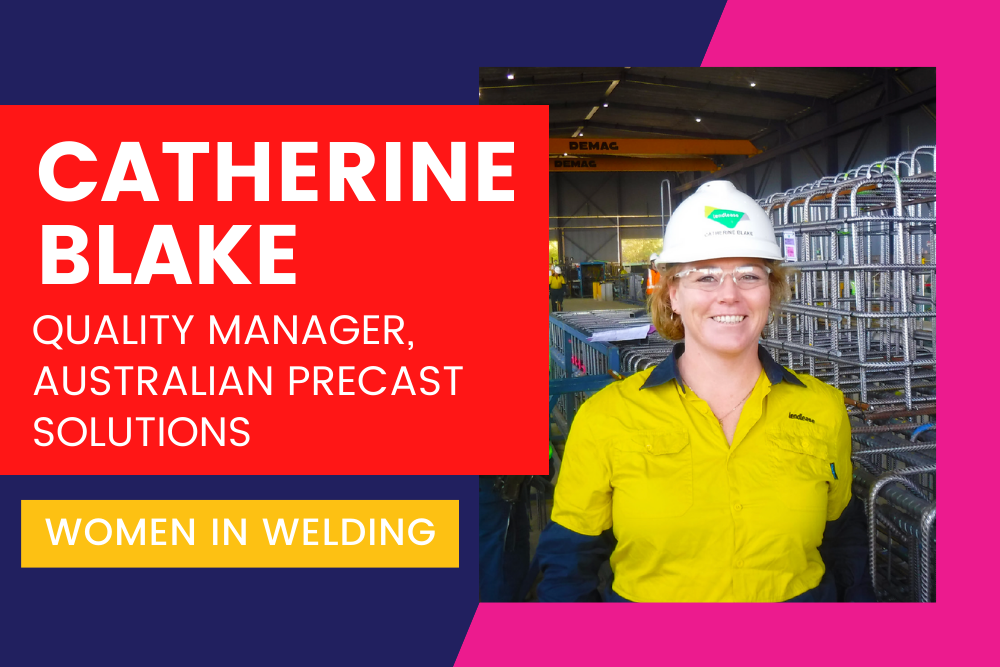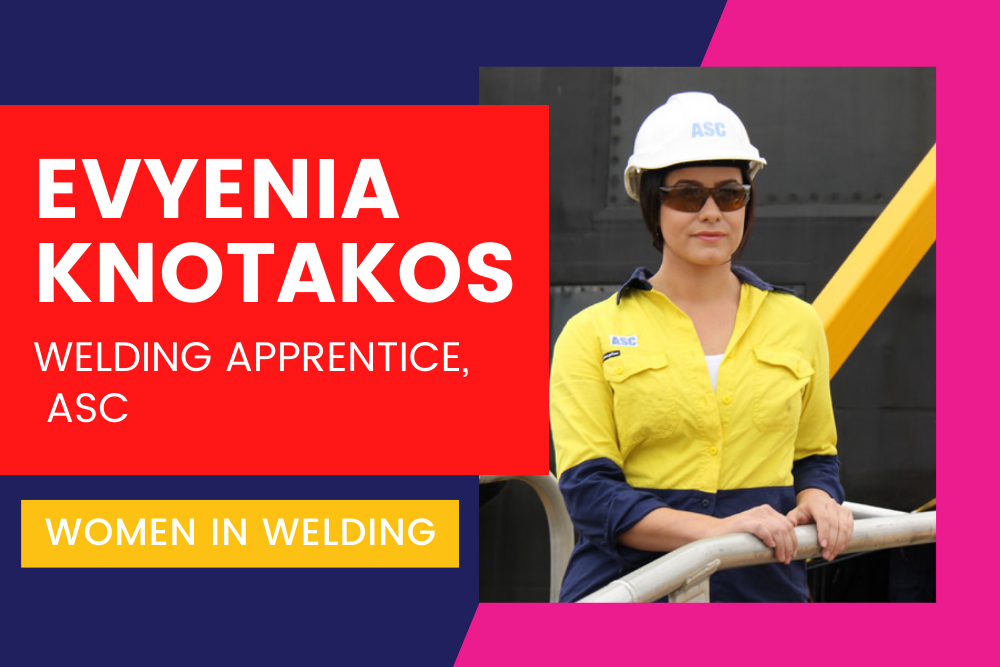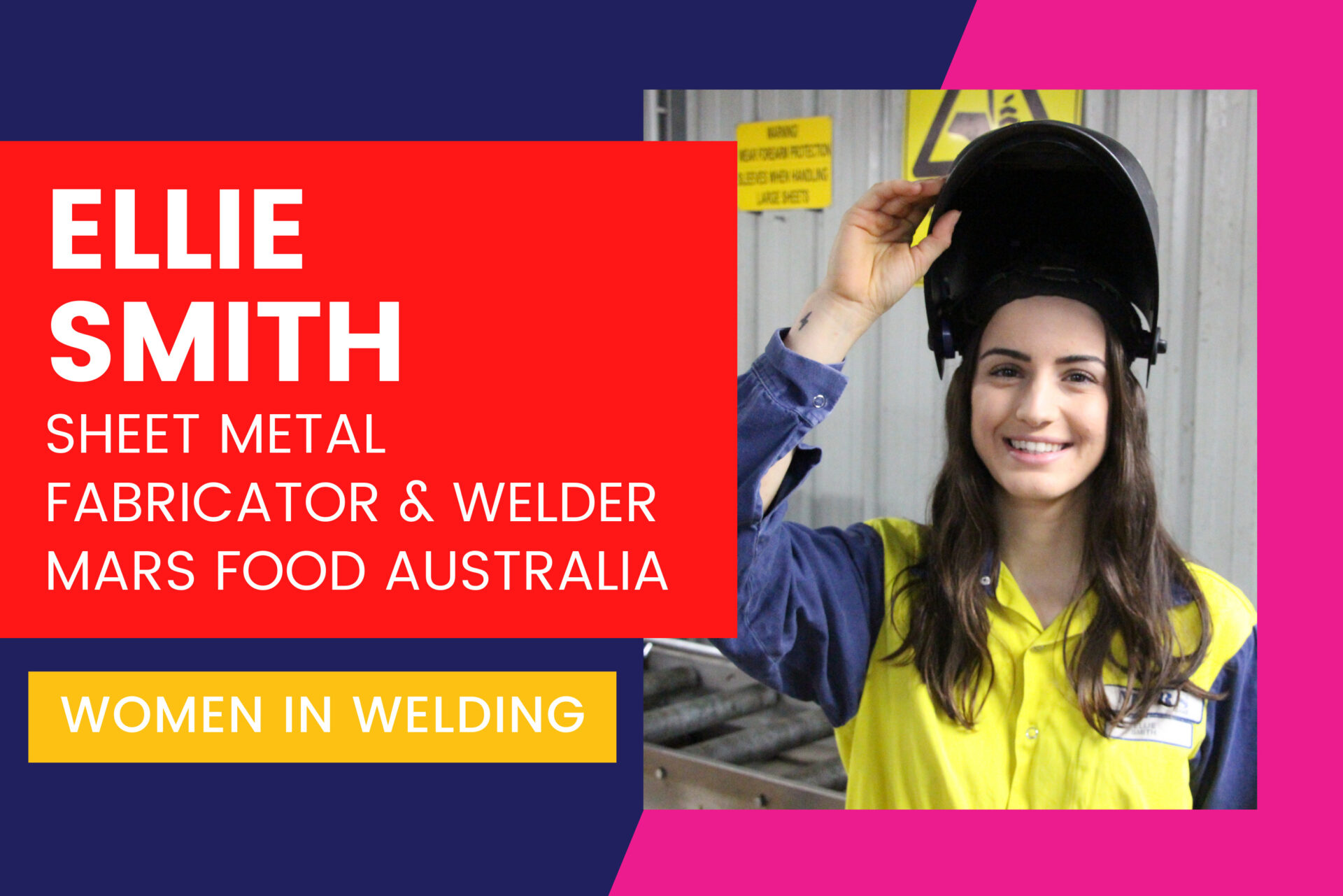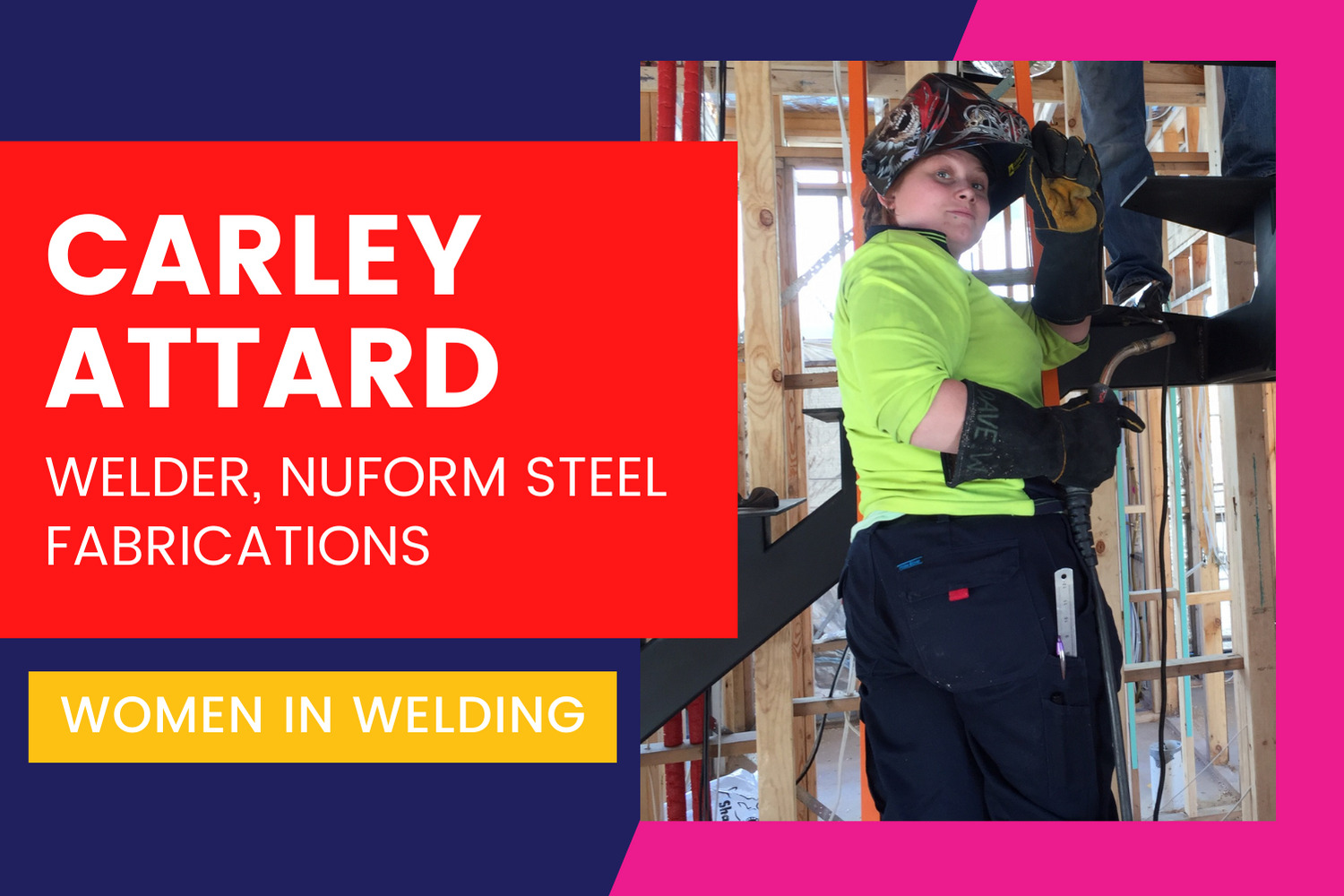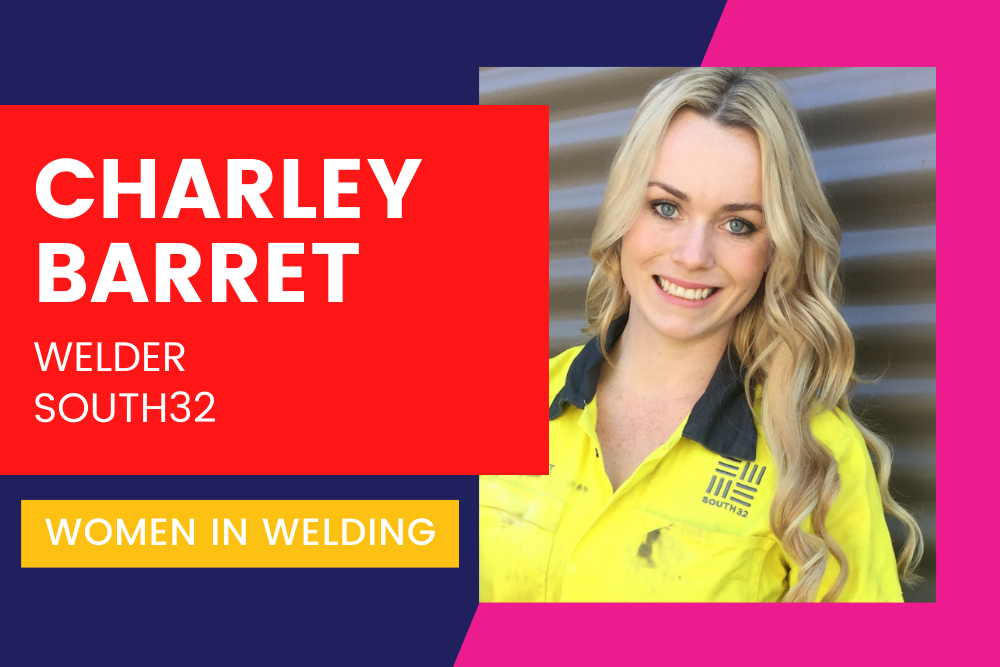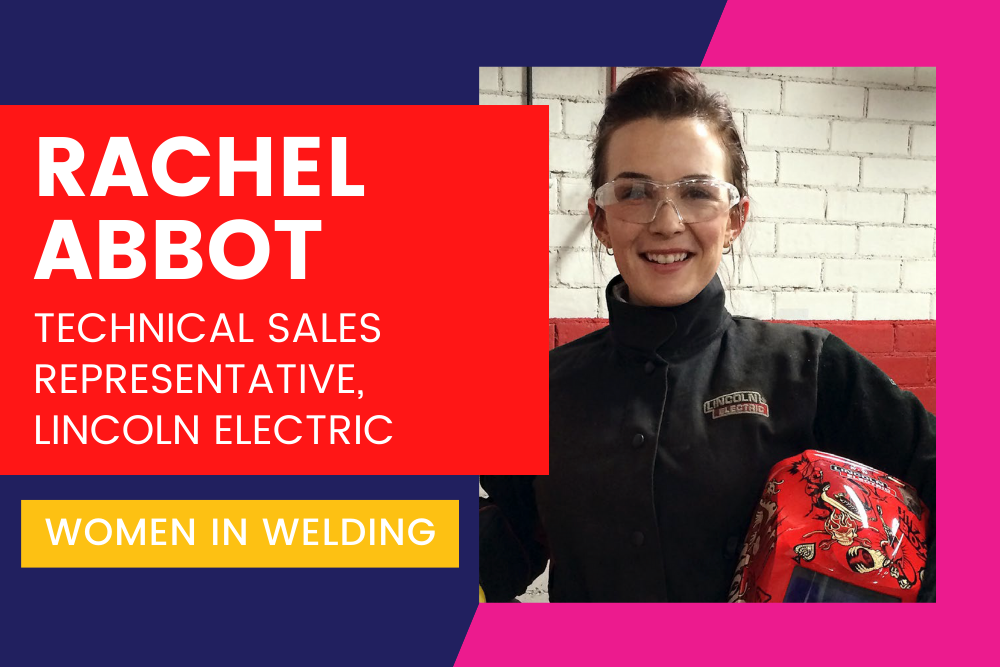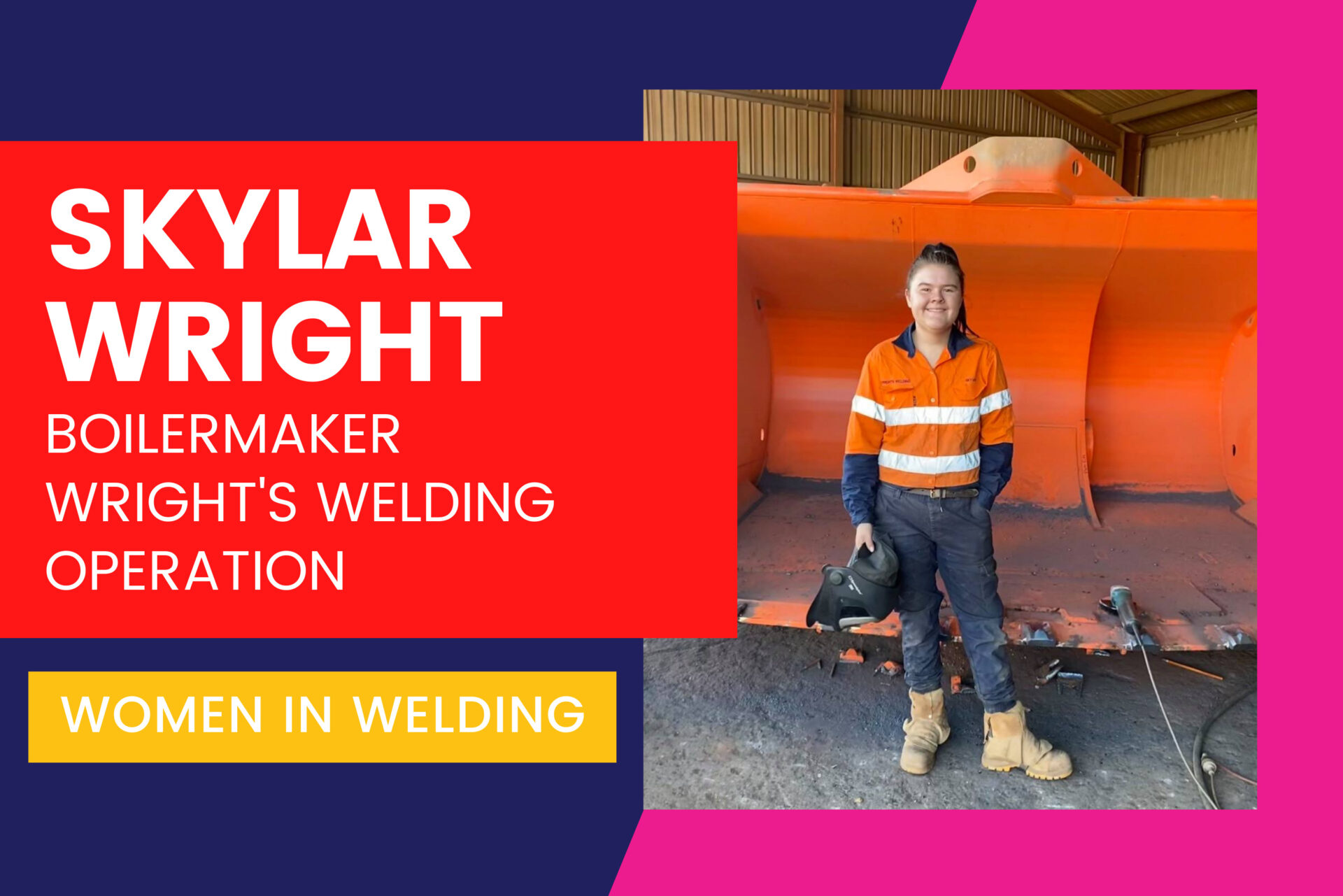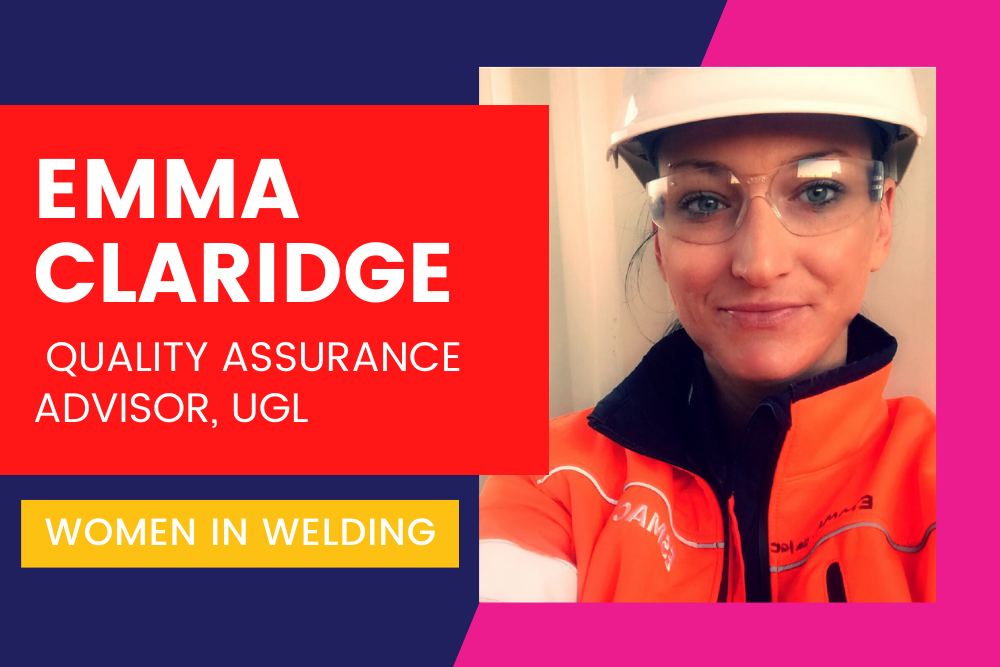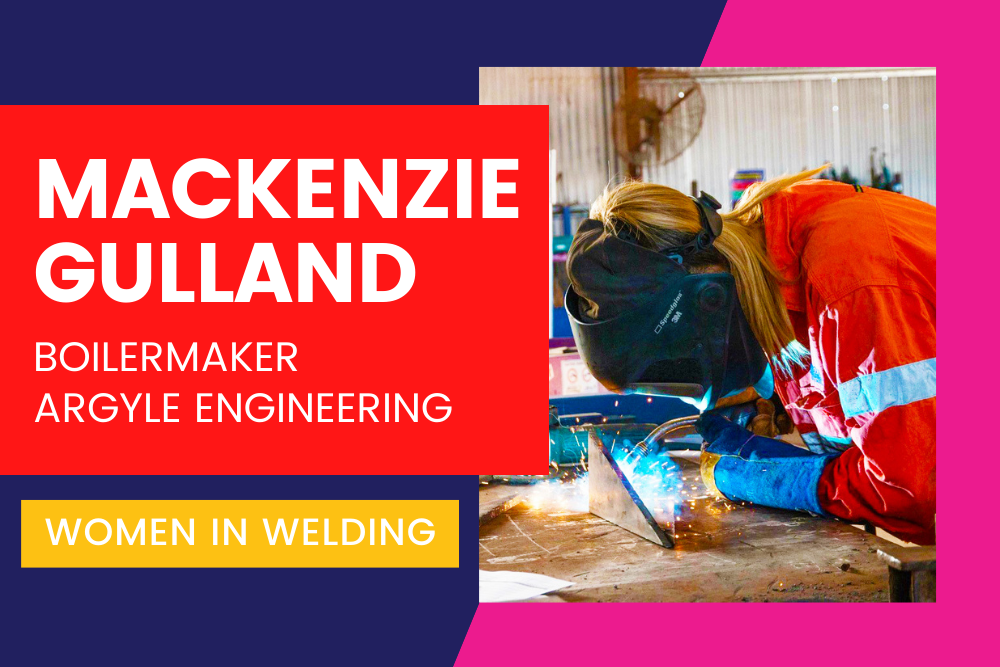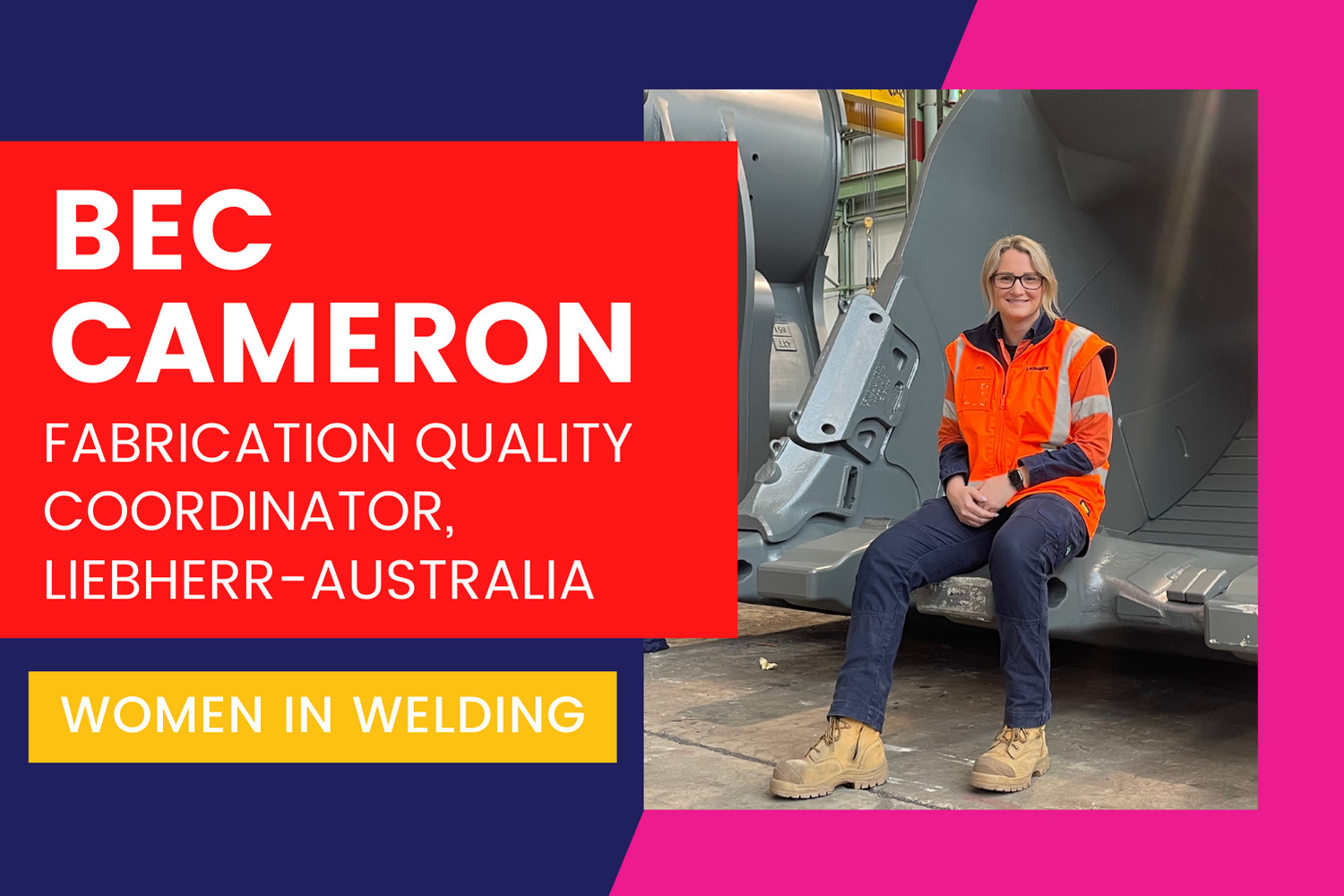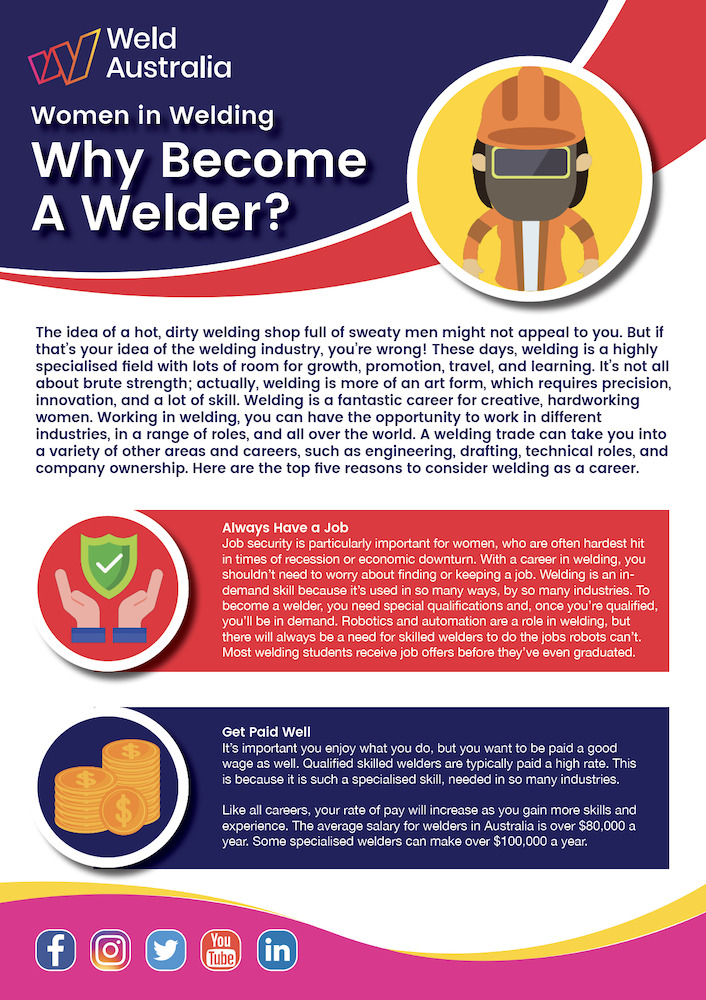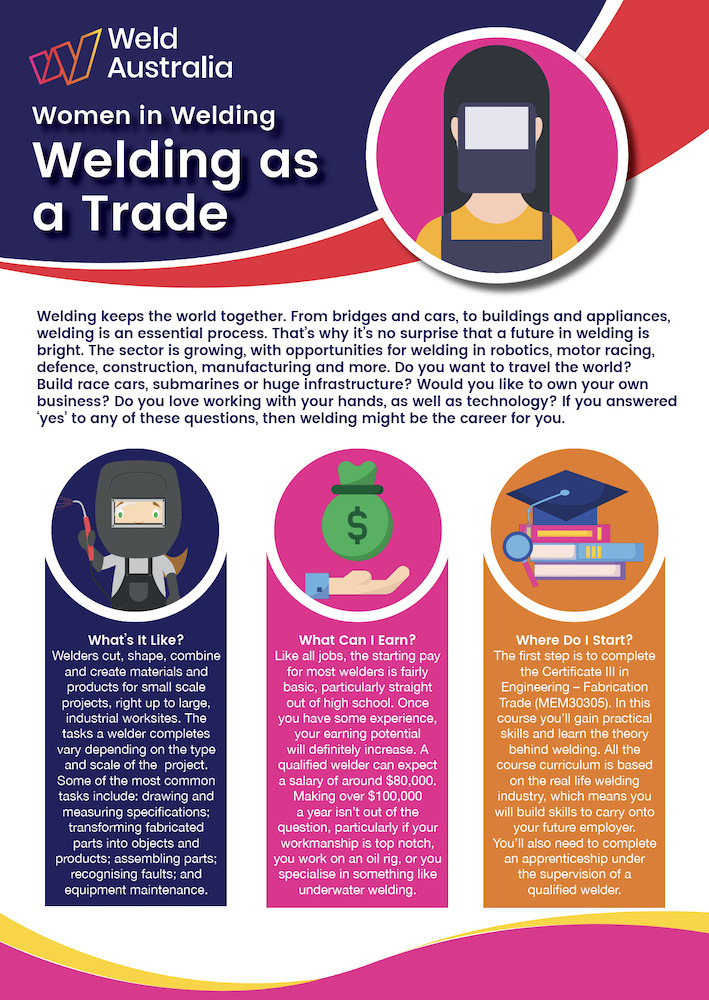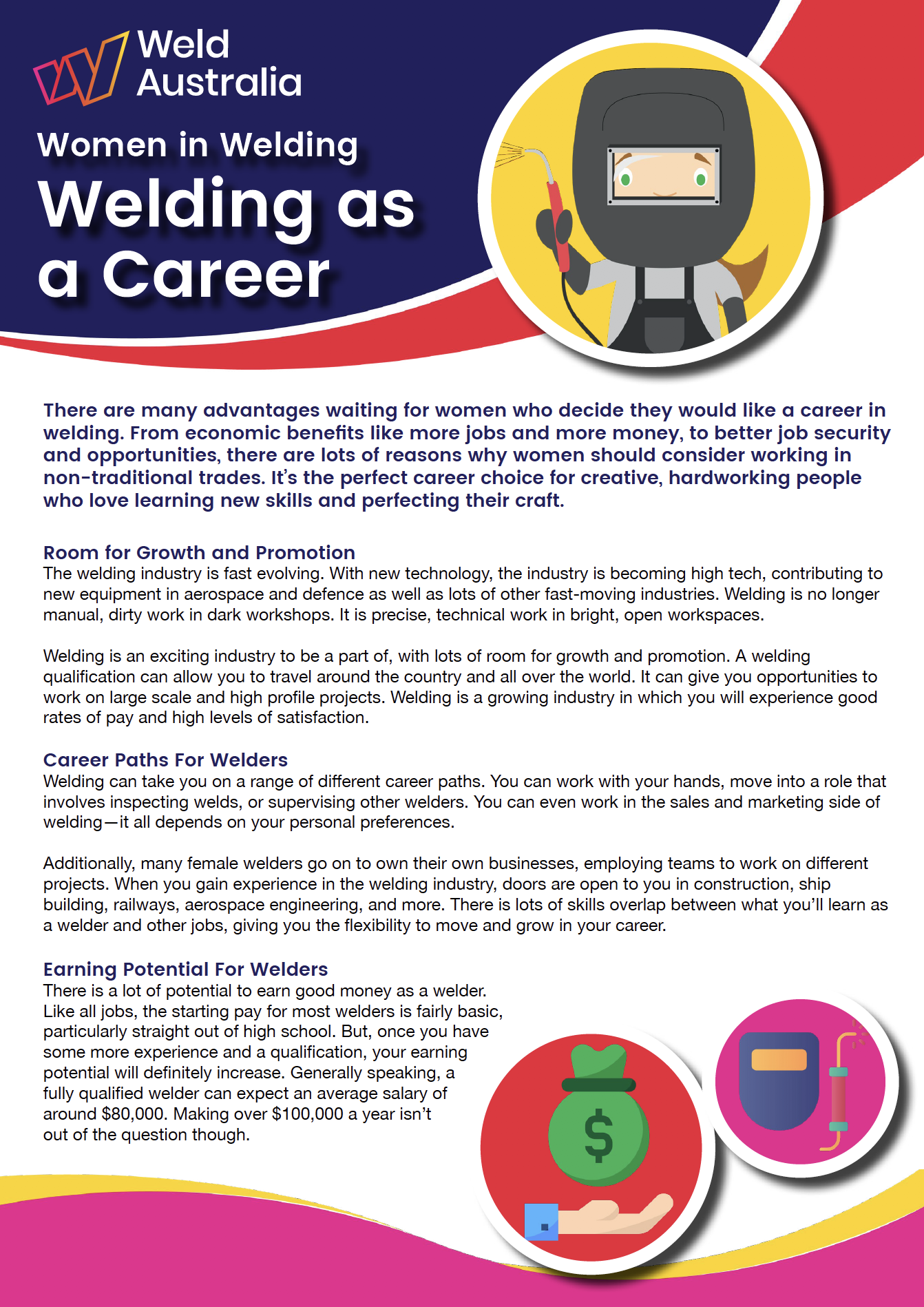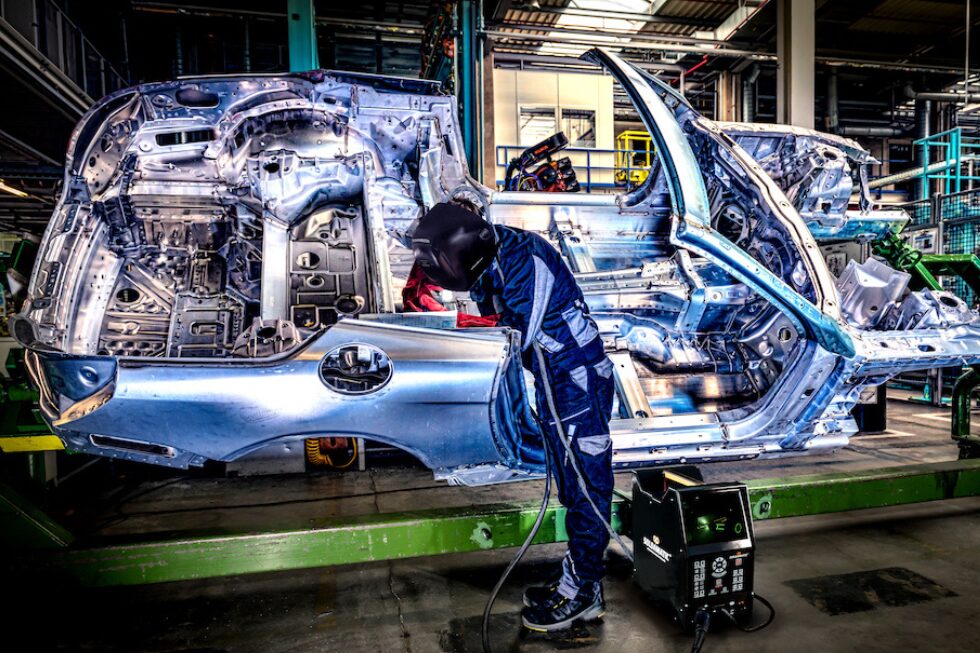Gender equity and diversity in the construction and manufacturing industry workforce is a persistent problem that exacerbates skills shortages, reduces economic productivity, and constrains innovation.
In fact, women account for less than one per cent of Australia’s overall welding and fabrication sector.
Encouraging the participation of women in male-oriented industries such as construction, manufacturing and welding is long overdue in ending the cycle of employment disparity, gender pay gap, and representation of women in management positions.
Weld Australia is an active advocate for the participation of women in all male-oriented industries, which can ultimately lead to equal employment opportunities, closing the pay gap, and greater representation of women.
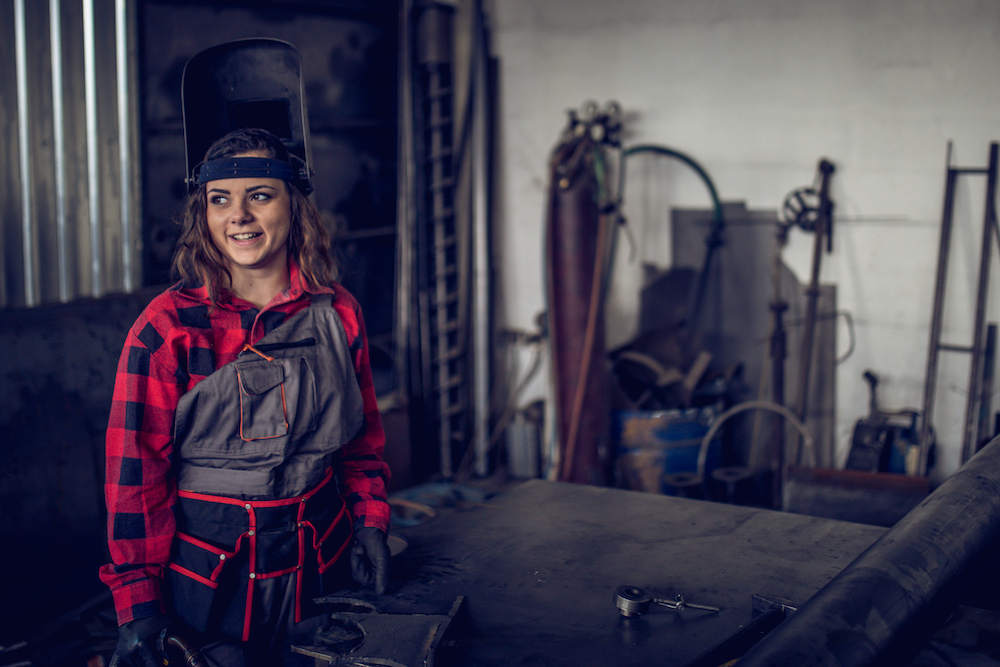 There are many advantages waiting for women who opt for a career in welding. There are significant economic benefits for women in non-traditional trades, from increased choice and availability of jobs, through to improved job security.
There are many advantages waiting for women who opt for a career in welding. There are significant economic benefits for women in non-traditional trades, from increased choice and availability of jobs, through to improved job security.
The welding industry is fast evolving. The advent of automation and other progressive welding technologies are paving the way for the manufacturing of high-tech equipment for the aerospace and defence industries, among others. Welding itself is no longer precarious, dirty work in dark workshops, but the precise work of the technically minded in bright, open workspaces.
A Looming Skills Crisis
According to the latest job demand data from the National Skills Commission (released in July 2020) around 30 per cent of recruiting employers are having difficulty filling their vacancies. And this is despite relatively low recruitment rates and an increase in the number of job seekers since the outbreak of the COVID-19 pandemic.
Respondents indicated that ‘lack of applicants’ was the most common problem (mentioned by 44 per cent of employers), followed by ‘applicants lack experience’ (27 per cent), and ‘applicants lack technical skills’ (20 per cent).
This lack of skilled workers is compounded by the fact that over 35 per cent of Australia’s existing welding workforce is aged over 45 years. This heavy proportion of older skilled trade workers, particularly welders, puts into focus the looming issues that industrial sectors are likely to face when baby boomers finally reach retirement age—welding positions will simply become impossible to fill, particularly given the projected increased demand.
In fact, the Australian Government has projected that, to 2024, the number of job openings for structural steel and welding trades will be above average. In some states, advertised vacancies have shown substantial increases over the last few years; Queensland has seen welding trades workers vacancies increase by 87 per cent, Western Australia saw vacancies increase by 80 per cent, and Victoria saw an increase of 18 per cent.
And yet, the number of welding trade workers in Australia dropped by 8 per cent in the course of just five years; from 75,800 in 2014 to 69,600 in 2019. In addition, completion rates of welding apprenticeships, including a Certificate III in Engineering (Fabrication Trade), continue to fall by as much as 23 per cent annually.
Increasing diversity in the workplace is possibly the best way to alleviate the looming skills shortage. Every effort needs to be made to encourage women to become welders.
At the moment, women account for less than 1 per cent of Australia’s welding and fabricating workforce. This is a staggering statistic. To put this into perspective, on average, women comprise 48 per cent of Australia’s entire workforce.
Weld Australia Advocacy
Weld Australia has taken a proactive stance to promote the opportunities for women in the welding profession.
We are proud to host the Women in Welding discussion group, where Australia’s leading female welding professionals regularly come together to focus on addressing the unique issues faced by women in our profession.
Importantly, Weld Australia has also lobbied the Federal Government to set measurable targets to achieve much-needed improvements in the gender composition of Australia’s trades. A targeted approach should engage and recruit women into all trades. A suite of new initiatives may include new and innovative trade training programs designed specifically for women, which enhances workplace participation and motivation.
Increasing diversity in the workplace is possibly the best way to alleviate the looming skills shortage. Every effort needs to be made to encourage women to become welders.
Women in Welding Profiles
Weld Australia regularly profiles women working in the welding industry in our flagship publication Australian Welding. Click on the images below to see some of those profiles.

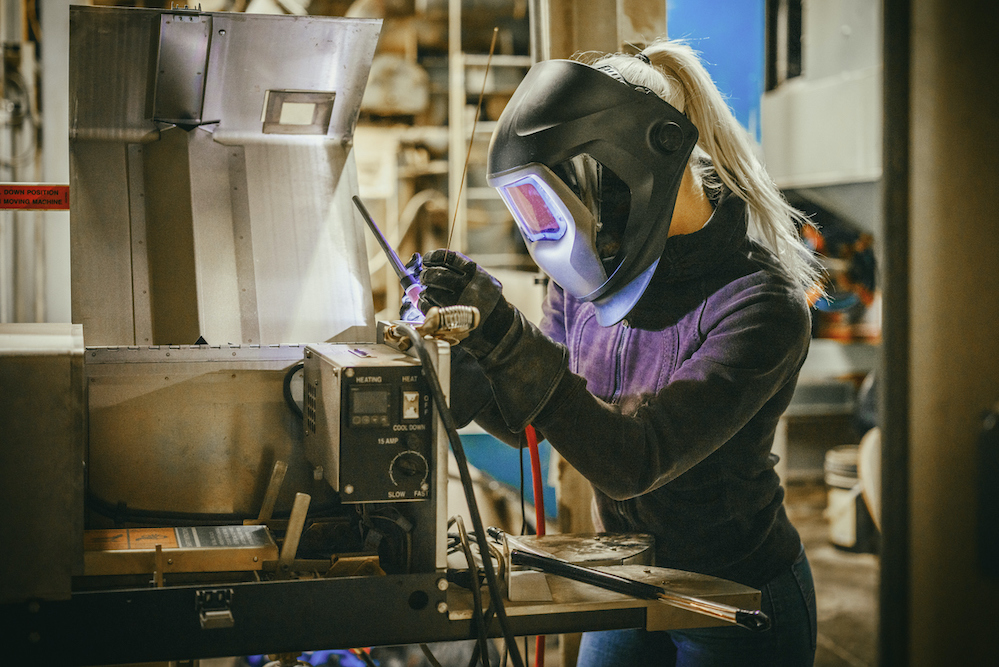 Increasing diversity in the workplace is possibly the best way to alleviate the looming skills shortage. Every effort needs to be made to encourage women to become welders.
Increasing diversity in the workplace is possibly the best way to alleviate the looming skills shortage. Every effort needs to be made to encourage women to become welders.